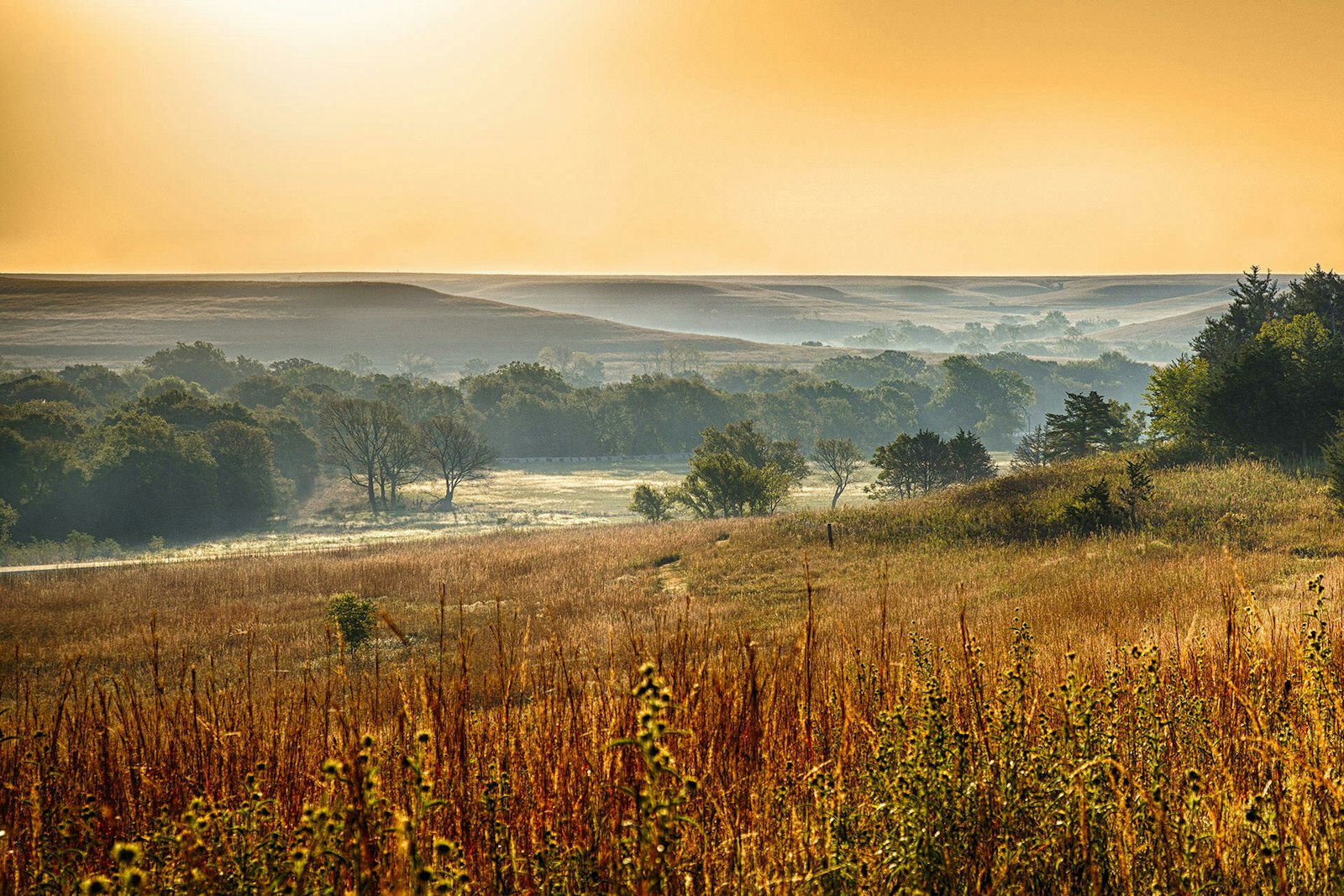
Tallgrass Prairie National Preserve
Tallgrass Prairie National Preserve protects the once vast tallgrass prairie and its resources. Visitors enjoy hiking, fishing, and education programs.
Tallgrass prairie once covered more than 140 million acres of the United States, from Indiana to Kansas and from Canada to Texas. Nearly all of it is gone, plowed under for agriculture. An ancient past survives in the irreplaceable Flint Hills tallgrass.
In prehistory, what is now a sea of grass, was once a shallow sea of water. Two hundred to 300 million years ago the gray and white rock limestone and steel tough chert commonly called "flint" began to form from this Permian Sea floor. The result was shallow, rocky land considered unsuitable for plowing but excellent for pasture. The natural prairie cycle of weather, wildfires, and animal grazing -- once bison, now cattle -- has sustained the tallgrass prairie and its diverse plant and animal species ever since.
Now you can find over 500 species of plants, nearly 150 species of birds, 39 species of reptiles and amphibians, and 31 species of mammals. Much of the prairie flora and fauna is far too tiny to be seen from a passing car. For those who take the time to stop and look closer, a subtle world of special beauty and natural wonder is waiting.
Park image courtesy of kansasphoto/Flickr
Park Updates
-
Update$4.4 Million to Fund 99 Open OutDoors for Kids Projects for 2023 – 2024 School Year, Hitting Program Milestone
-
UpdateEvery Day is Earth Day